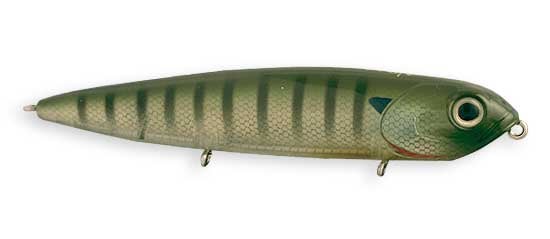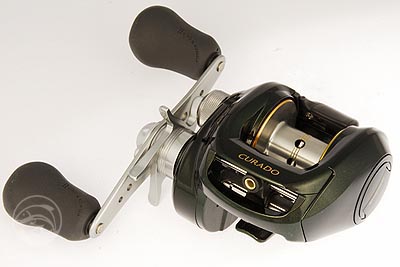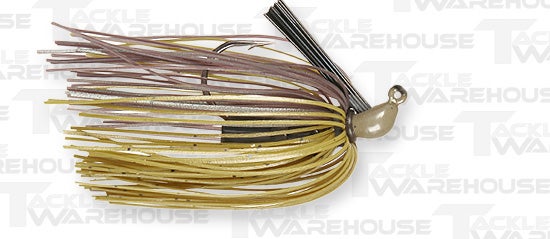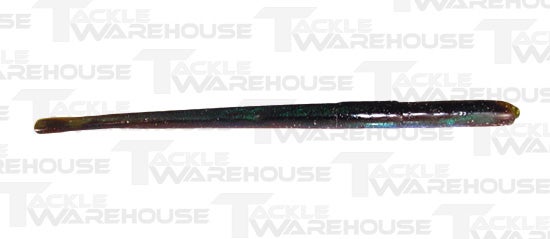Welcome! To the ima EMAILER ~ June 2008 Issue
The IMA EMAILER brings you news from IMA pro staff members Bill Smith, Fred Roumbanis, Michael Murphy and other Ima pro staffers across the USA and worldwide.
| Good News! This month’s emailer is about two brand new ima hardbaits! |
Fred Roumbanis Wins First Place in Bassmaster Elite on Lake Murray!
Congratulations to ima pro Fred Roumbanis on his $101,000 win in mid-May at Lake Murray. Fred won the Bassmaster Elite Series event out of Columbia, S.C. For more information, visit Fred’s home page at: www.swimbaitfred.com.

ima Intros New Surface Skimmer and Vibrating Rock N Vibe
Determined to bring their lure expertise and originality to the U.S. lure market, ima Japan has developed two new bass baits to be presented to the U.S. wholesale and retail tackle-buying community & the fishing media at ICAST, the sportfishing industry’s annual trade show in Las Vegas, NV in mid-July.
First is the Rock N Vibe, a new vibrating lipless crankbait.
The other is a new top water walking type bait called the ima Skimmer.
Both were worked on in Japan throughout the past 2 years. Both are very unique in there own ways.
Both baits will retail for $15.99.
About ima Japan
Established in 1998, ima Japan is one of the most prestigious hard plastic lure manufacturers, for both fresh & saltwater lures, in Japan.
ima’s lure designers possess degrees at top Japanese universities in marine science or engineering degrees specializing in CAD systems. This coupled with being experienced fishermen enables ima to move from a concept – to a prototype – to a perfected lure at record speeds with the utilization of CNC machines. This does not mean they rush the job. It means they can rapidly evolve, creatively explore and fine-tune a lure concept by making infinite changes to any dimension or feature whatsoever, and have a computer-machined version of the changes ready to field test within minutes. It tends to take traditional lure manufacturers weeks or months to produce modifications that ima can make in a moment. That means many other lures only undergo a fraction of the testing and design refinement that ima does. ima’s unique ability for rapid, iterative design, development & testing brings out the best in every bait produced by ima. It’s not just the computerized machinery, but the advanced understanding of lures & fish that ima’s designers possess.
“Now, consider that the new Rock N Vibe & new Skimmer were in ima’s intense prototyping phase undergoing analysis & testing for two years, and it’s no wonder why ima holds the reputation for having the finest hard baits for both fresh & salt water in Japan,” says Matt Paino, CEO of Optimum Bait Company in Temecula, CA who handles all of ima Japan’s marketing & distribution throughout North America.
“Anglers in Japan expect to see only the best from ima, and US anglers are starting to hold these same lofty expectations of ima too,” says Matt. He refers to the satisfaction US anglers are already enjoying with ima’s initial product releases from 2007 – the incredible Roumba wakebait, Flit jerkbait & Shaker flat-sided crank. Those three were painstakingly designed & tested by ima engineers in collaboration with B.A.S.S. Elite & FLW touring pros Fred Roumbanis, Michael Murphy & Bill Smith.
Based on ima’s initial success in 2007, Paino expects the new Rock N Vibe and Skimmer to enjoy rapid & widespread acceptance by shopkeepers, anglers & of course, bass everywhere in 2008.
“We waited to promote these exciting new lures until we had a good handle on the production. These are ready to go from ICAST straight into stores and right onto the ends of avid anglers’ lines,” says Matt.
“A growing group of sophisticated bass anglers out there (and this is not just in the US but also in Europe), are realizing that by simply tying on a lure like one from ima, they are gaining an equipment advantage, almost leapfrogging over other anglers,” believes Paino. “We see guys who will finish better in tournaments simply because of using ima lures. They’ll be first to tell you they’re not necessarily the better anglers, but by using ima lures, they acknowledge they are boosting their chances to catch better fish & finish higher.”
Introducing the new ima Skimmer
The Skimmer has a slim profile body & skims the surface gracefully.
“It is surprising how ima was able to create such a wide walk the dog type action with such a slim profile bait,” exclaims Matt. “It swims very gracefully across the surface.”

Slim Shape Appeal
Thin is always in! The ima Skimmer is unique among hard plastic topwater stickbaits in that only the ima Skimmer has the slender body shape of a 5″ soft plastic stickbait. This slim profile has proven to be one of the most appealing bass lure shapes ever. There’s a whole lot to be said simply for this slender profile & silhouette, & the ima Skimmer is really the only topwater hardbait that has it now.
All the Skimmer’s counterparts, other surface walking baits tend to be wide and bulky, and that causes them to waddle and slog sluggishly around. Most of the others walk side-to-side and progress across the surface with a slow heavy pace. They plod across the top, with their wider bodies causing lots of water resistance. They push a lot of water and rely heavily on the splashing, thrashing & surface confusion they cause to provoke strikes.
The Skimmer differs from other baits due to its thin body. It knifes across the surface, dancing, skating & swimming strongly like a svelte Olympic swimmer in top condition. It has a lively, light action.
Yes, the Skimmer can certainly cause chaotic, splashy action on top. If that’s what you & the fish want from it, you’ve got it.
In addition, you may also want to simply get a strong, rhythmic side-to-side swimming motion going, where the Skimmer uses its entire body length to swim, sculling across the top with authority.
Think of the Skimmer as a soft stickbait on steroids, one that casts like an arrow, even into a stiff breeze, and cruises the surface like an explosive missile.
The Skimmer’s built with a body movement unlike no other. This movement is a skating, dancing, wriggling thing. When done right, it practically comes alive, and that’s an action to concentrate on making – the movement and motion of the Skimmer’s slender swimming body versus the splash and confusion of traditional stickbaits. It’s the strong swimming movement, not the splashing around, that’s key to the Skimmer’s slim shape appeal.
 Bringing Out the Best Action
Bringing Out the Best Action
Since the Skimmer is thinner, its action is cleaner and crisper than bulkier baits. Make no mistake, a lot of hand-to-eye coordination is always required with any member of this class of surface-walking lures. There’s an art to pulling these puppets to life on the end of your string. As always, practice makes perfect.
The way to work the rod will vary a little depending on the angle you cast it relative to the wind and based on the surface condition (smooth, rippled, choppy and so on). You need to vary the rod movement under different conditions based on what your eye sees in terms of lure action. In terms of where to keep your eyes, watch the head and eyes of the Skimmer.
Tune out the surface disturbance it’s making. Don’t even look at that. Focus in on the bait’s body movements, and you’re going to use what you see it doing in order to coordinate and adjust your hand movements with the rod. There’s a certain sweet spot with the Skimmer that you’ll recognize when you see it. The side-to-side movement suddenly isn’t mechanical any more. It becomes more of a gasp or a flop or a jump to each side, and there’s a certain slo-mo ‘hang time’ that seems to occur that visually lasts longer than it really is. Difficult to describe in writing, but you’ll recognize it when you see it on the water.
Wild Boiling Action
The tail-weighting is another key to the Skimmer’s appeal.
If you’ve seen mating dragonflies in early summer and the female dipping the tip of its tail depositing egg after egg under the surface, locked in synchronous flight with the male, the graceful tail action of the Skimmer is not unlike that.
Another way to think of the stir caused by the Skimmer’s tail action is to compare it to one of those flat wood paint stirrer sticks they give you with a gallon of wall paint – the tail has the same stirring effect on the surface of the water.
A large part of the Skimmer’s action is caused on the ending note of each zig or zag as the tail-weighted back end of the ima Skimmer dips and stirs the water causing a large boil to swell up behind it.
Each time the Skimmer glides to the side, the final action is the weighted tail deeply stirring the surface, causing a large, concentric ring or boil like a bass coming to the surface, swirling at it.
So every time that the Skimmer zigs or zags left or right, the final movement is the weighted tail stirs the surface into a widening boil, and the Skimmer slips out barely ahead of the boil, just like a desperate baitfish narrowly escaping a bass’s lunge.
Competitive Feeding Signals Call Bass in From Afar
The Skimmer’s action then becomes a non-stop series of ever-widening boils emanating behind it. It’s like having a school of surface-feeding bass on the scene, all taking their best shot, boiling the surface behind the ima Skimmer’s tail.
If there’s ever anything that gets a non-committal bass to bite, it is other bass feeding in front of it – and that’s the competitive feeding cue that the Skimmer’s tail-stirring movement sends out to every bass within range of sensing the surface-feeding boils trailing out behind the Skimmer.
Stir Bass Into a Frenzy of Instant Excitement
Each wide and sudden boil stirring the surface is an instinctive and universal signal of competitive feeding action that calls bass in from far and wide to take advantage of the feeding frenzy that’s going on behind the Skimmer.

Why Not Stir Up a Surface Feeding Frenzy on Every Cast?
With ima’s new Skimmer. It’s 4-1/2 inches long and weighs 3/8 oz with two sticky-sharp premium #4 Owner trebles.
ima’s New Rock N Vibe Lipless Crankbait
In Japan, what bass fishing means to an angler and to a lure manufacturer is a little different than here.
There is a stronger awareness of precisely how each and every manufacturer and model of Japanese bait measures against all others.
 In one Japanese fishing magazine in particular, Lure Magazine, the highly-educated readers vote on lure rankings. There are endless pages that rank all models of crankbaits, all models of topwaters, soft baits and so on. Then there are pages that rank all models of baits for this lake or that river, etc. In this regard, Japanese anglers are much more aware of the many baits, the distinctions between manufacturers and models of them.
In one Japanese fishing magazine in particular, Lure Magazine, the highly-educated readers vote on lure rankings. There are endless pages that rank all models of crankbaits, all models of topwaters, soft baits and so on. Then there are pages that rank all models of baits for this lake or that river, etc. In this regard, Japanese anglers are much more aware of the many baits, the distinctions between manufacturers and models of them.
Japanese anglers are more aware and bestow more honor on their lure designers too. In the case of ima’s new Rock N Vibe, it is the creation of Japanese lure designer, Hide Iimura. The individuals who conceive each new Japanese lure design are famous for it. They’re held in high regard as true artists. After all, the goal of all art is to imitate or reflect some facet of life, and isn’t that just what a lure is? An imitation that reflects life so well, it is mistaken for it.
It is not uncommon for a devout Japanese bass angler to have a sacred kind of fishing corner in his house. It is just a small space where his rods, reels, lures, tackle bag, fishing vest or jacket, hat and other accessories are prepared and laid out in this special corner in a noble manner when he is not using them. His corner may contain photos, a lucky charm or other special fishing object like that. In this way, no matter what else goes on in his life, his fishing corner remains tranquil and always ready. One look at it brings back the many memories his fishing corner holds of fish and friends past… and it harbors his wishes of fishes yet to come in his future.
Lures, of course, are an important part of this. After all, it is only the lure that the fish dreams to bite. The fish hasn’t any interest whatsoever in the rod, reel, line, fishing vest, patches, hat, tackle bag, boat, motor, trailer, electronics or tow rig. All necessary? Surely. Yet the fish dreams of the lure alone, and the fish honors the manufacturer who made it and honors the angler who presents this lure to the fish in the manner that is fitting for the fish to bite it.
The moment when the fish is lured and played…when the hook’s hold is removed from his lip…when the man has an astonishingly fine fish in his hand. He respects it, thanks it for making the dream his reality, and returns it carefully back to its life.
It’s then that the man and the fish have both been set free. Time and life’s troubles do not exist at that moment. It is the moment that fishing means. It is the moment that lives forever – never to be forgotten, not to be excused, confused or compromised – in the angler’s sacred corner he sets aside within his fishing mind.
That is the moment when the folks at ima hope to make all your fishing dreams come true! It’s what they work for, strive to reach for in their perfection of lures worthy of you, to make the fish of your dreams become your reality.
ima’s latest offering for you in the pursuit of your dreams is the Rock N Vibe lipless vibrating crankbait.



Before tying the Rock N Vibe on your line, cup it carefully in the palm of your hand and shake it. You’ll hear and feel a vibrancy not found in other lipless cranks. It’s almost the noise and feel of something alive in your hand, such as a cicada or other noise-making insect.
The Rock N Vibe does not make an excessively loud noise, but it is a more natural or vibrant noise than many other rattling cranks. In addition to noise, the Rock N Vibe generates a high vibration that feels like a buzz between your fingers.
Next, tie it to your rod, hook it securely onto a rod guide foot, and put that rod inside your car or truck with you on your way down to the lake. As you motor down the bumpy highway, listen to the rumbling noise made by the rapidly-vibrating Rock N Vibe on the rod in the vehicle with you. It’s more like a constant, low rumble than a rattle. More of a shivering or quivering sound all abuzz like some sort of insect or something alive.
As you cast the Rock N Vibe, you’ll notice that rumble and buzz manifest itself in the rod tip in a way that no other crankbait does. It’s not the way you feel a wide or tight wiggle with other crankbaits, but it’s a sort of bouncy, buzzy, vibrancy in the rod tip.
One look at the Rock N Vibe as it nears boatside, and you’ll see that same vibrant quality in the bait’s action. One way to describe the action is to say there’s a lot of side and belly movement in the swimming behavior of the Rock N Vibe that’s not found in other lipless cranks.
The sides and belly seem to wiggle and flicker like there’s no tomorrow, and the detailed color patterns simply dance and play like alive. It has a rather realistic baitfish swimming movement and action compared to the more mechanical and artificial actions of many other lipless cranks. It’s a work of art, imitating life.
When paused, the Rock N Vibe falls straight and true. It is a true countdown lure since it won’t tangle the line as it falls. Most all lipless cranks sink, but many spin or foul the line as they do, so they’re really not useful for counting down to deeper depths. That’s the last thing you want – a lipless crank that fouls itself when it falls or is paused, ruining cast after cast. The Rock N Vibe won’t do that. It falls perfectly true when paused or on the sink, making it useful to countdown to various depths.
This doesn’t mean the Rock N Vibe will never tangle. When popped sharply on a lift-and-fall or jigged erratically using a yoyo presentation, any bait will occasionally tangle. It’s just the nature of such techniques. However, the Rock N Vibe’s ability not to tangle on a typical stop-and-go or jerk-and-pause approach is a key design feature since fish often hit on such pauses or change-ups in the action.
Plus the Rock N Vibe will stay down at the depth it was counted down to. Most other lipless cranks won’t do that. Even if you can count them down without fouling themselves, many lipless cranks tend to rise up higher like kites once the retrieve is started, not staying at the desired depth like the Rock N Vibe will for you.
Feeling reckless? Try ‘worming’ the Rock N Vibe along bottom in deeper water as if you’d fish a worm or jig. Don’t flatter it by treating it in any special way. Totally disregard that you even have a lipless crankbait tied on, just hop and drop it the same way you’d work a worm or jig! The perfect, controlled sinking behavior of the Rock N Vibe is ideally suited for ‘worming’ it this way in deep water.
The fact you can worm it hits upon another valuable feature of the Rock N Vibe. You can use it at any retrieve speed. This bait can be fished at any speed from painstakingly slow to blazingly fast and all speeds in between. So whether the bass just want to lazily suck it in or aggressively chase it down, the Rock N Vibe will match the mood.
The Rock N Vibe is as much at home on medium spinning gear as on baitcasting, and it casts like a rocket on either outfit.
ima’s new Rock N Vibe is compact at only 2-1/2 inches long yet weighs a full 1/2 oz and sports two oversized premium Owner trebles that fish just can’t miss.
Give it a try and you’ll see why the pudgy little Rock N Vibe has that watchful eye and worrisome look on its face, because some big bully of a bass is constantly chasing after it!









 Bringing Out the Best Action
Bringing Out the Best Action
 In one Japanese fishing magazine in particular, Lure Magazine, the highly-educated readers vote on lure rankings. There are endless pages that rank all models of crankbaits, all models of topwaters, soft baits and so on. Then there are pages that rank all models of baits for this lake or that river, etc. In this regard, Japanese anglers are much more aware of the many baits, the distinctions between manufacturers and models of them.
In one Japanese fishing magazine in particular, Lure Magazine, the highly-educated readers vote on lure rankings. There are endless pages that rank all models of crankbaits, all models of topwaters, soft baits and so on. Then there are pages that rank all models of baits for this lake or that river, etc. In this regard, Japanese anglers are much more aware of the many baits, the distinctions between manufacturers and models of them.















